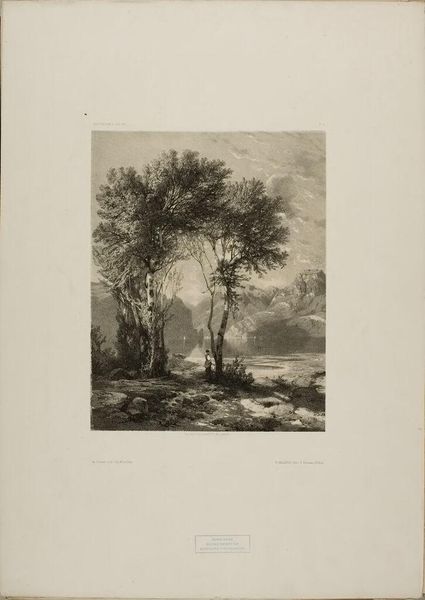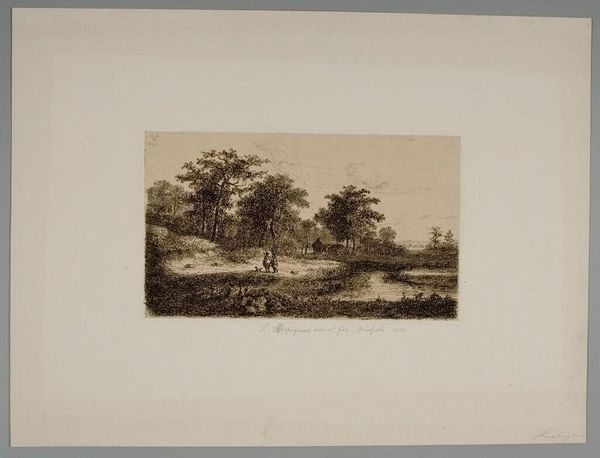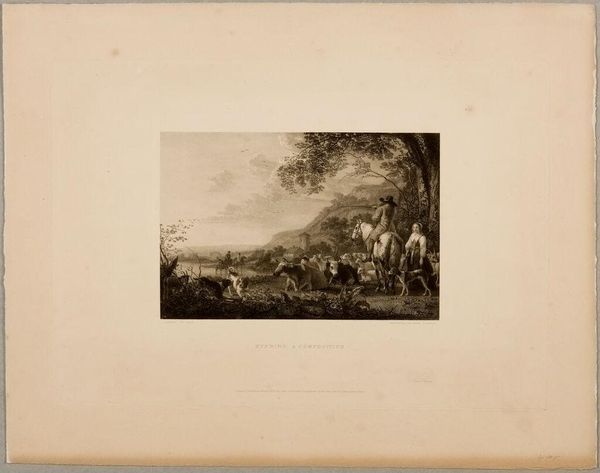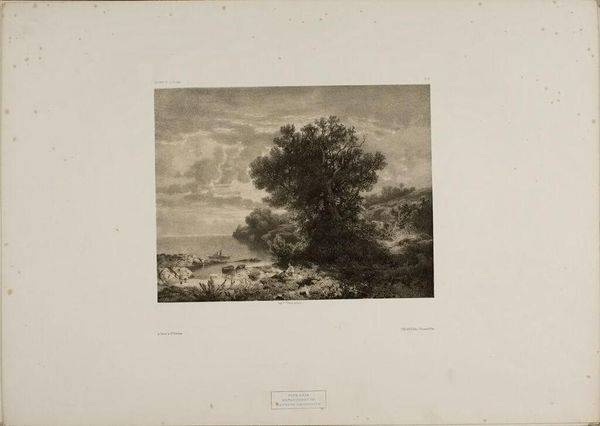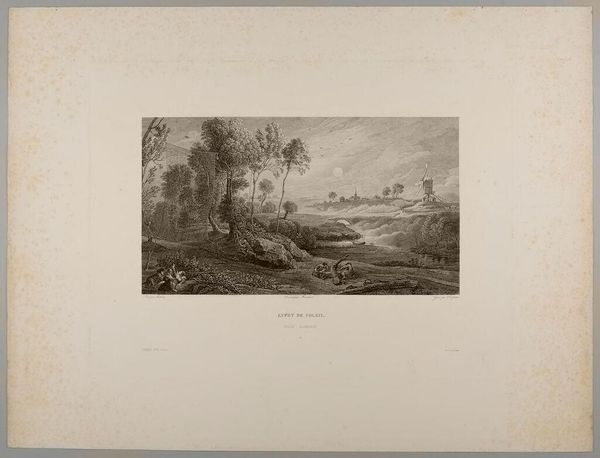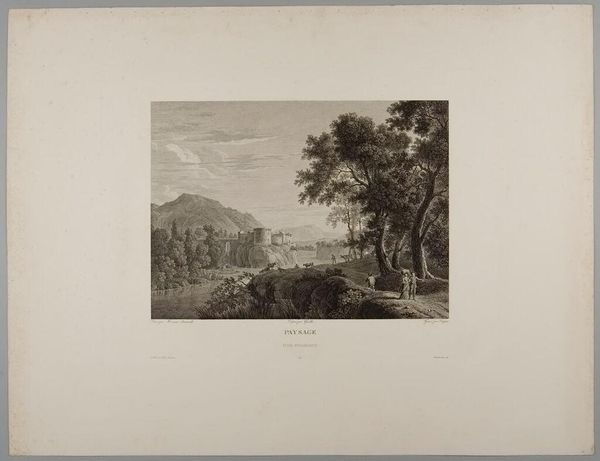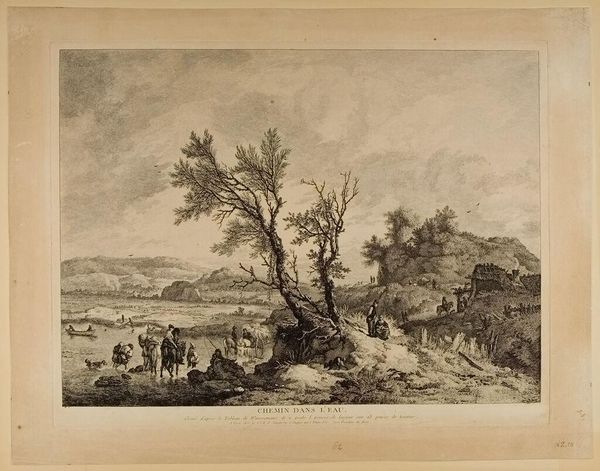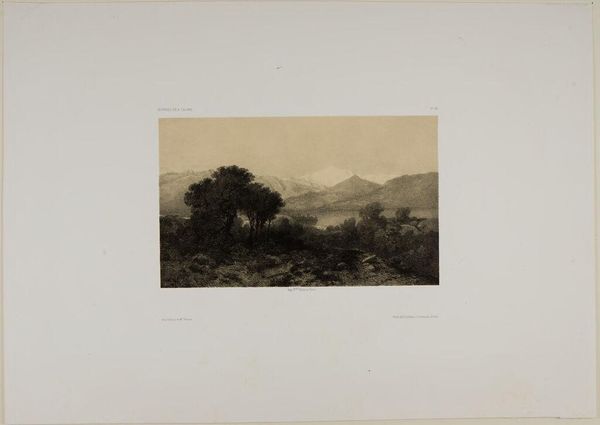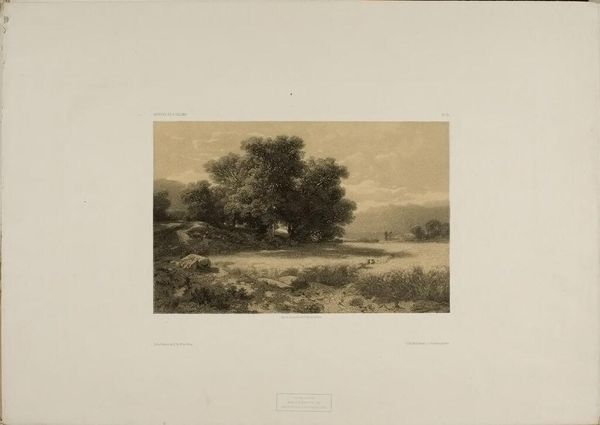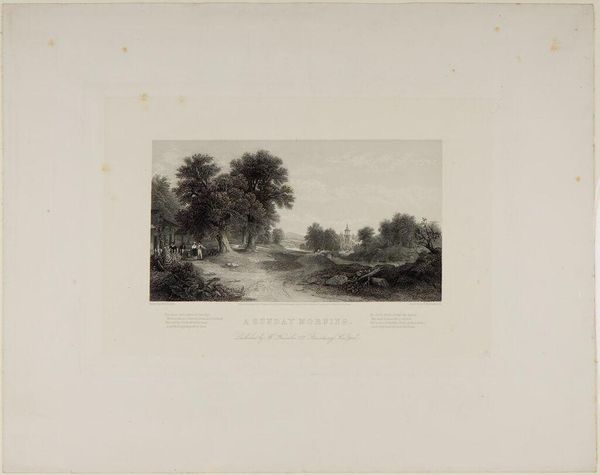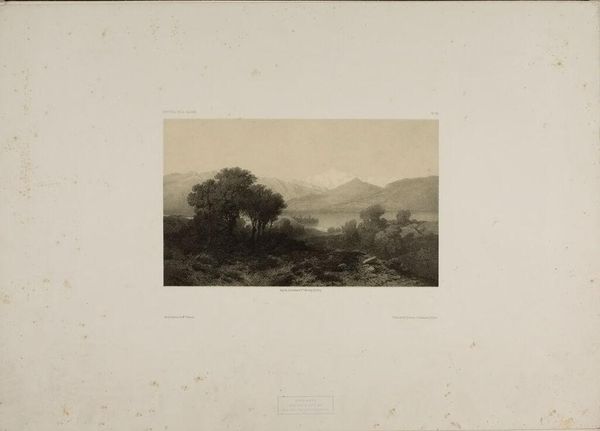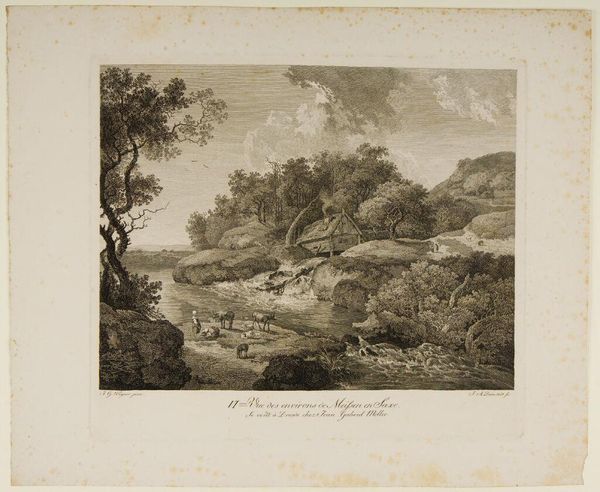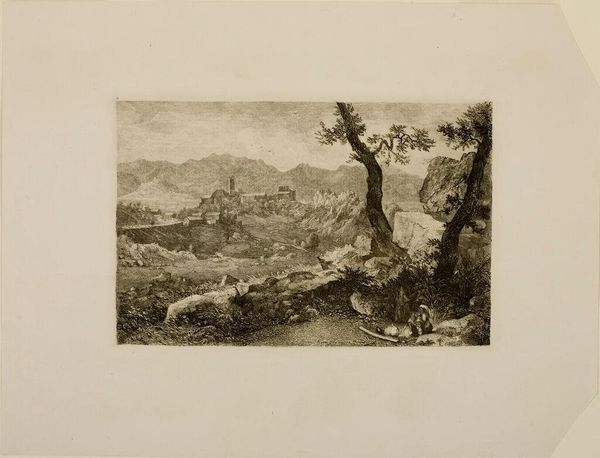
Dimensions: Image: 26 Ã 34.5 cm (10 1/4 Ã 13 9/16 in.) Plate: 33.8 Ã 40.3 cm (13 5/16 Ã 15 7/8 in.) Sheet: 48.8 Ã 64 cm (19 3/16 Ã 25 3/16 in.)
Copyright: CC0 1.0
Curator: This is "Landscape" by François Nicolas Barthélemy Dequevauviller. Dequevauviller, born in 1745, captures a serene, rural scene in this work held at the Harvard Art Museums. What's your first take? Editor: It’s pastoral, sure, but there's this gnarly, dead tree on the left that throws the whole thing off. It's like a memento mori crashing a picnic. Curator: The tree could symbolize the cycle of life and death, a reminder of mortality amidst the idyllic countryside. Such symbols resonated with audiences of the time. Editor: Maybe. Or maybe Dequevauviller just had a thing for morbid trees? It does give it character, though, a kind of rough edge to the otherwise smooth scene. Curator: Agreed. The contrast certainly adds depth. These landscapes often serve as allegories—reflections of the human condition, our relationship to nature. Editor: Well, if our relationship with nature involves dead trees, he nailed it. It’s a compelling image because it’s not just pretty; it’s honest. Curator: Indeed, a landscape that invites introspection, a symbol-laden glimpse into the 18th-century mind. Editor: I'll take that over another pretty picture any day. Makes you think, which is what art should do, right?
Comments
No comments
Be the first to comment and join the conversation on the ultimate creative platform.
